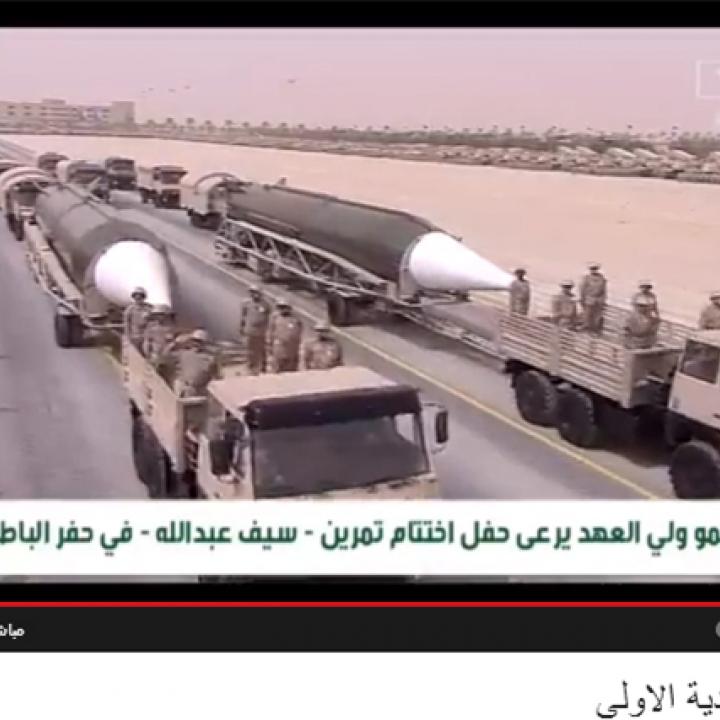

The inclusion of long-range Chinese-made missiles in a Saudi military parade is likely a diplomatic signal to Iran and the United States.
Earlier today, at Saudi Arabia's northeastern military base of Hafr al-Batin, the kingdom's armed forces held a massive military parade to mark the conclusion of a major exercise codenamed "Abdullah's Sword." A surprise feature of the parade was the inclusion of two Chinese DF-3 missiles, known as the CSS-2 in NATO nomenclature. These missiles were supplied to Saudi Arabia in 1987 and have long been based in the mountainous desert well south of Riyadh, from where they can target Iran. Today is the first time they have been seen in public.
The main guest at the parade was Crown Prince Salman, the Saudi defense minister; other top guests included King Hamad of Bahrain and Sheikh Muhammad bin Zayed, the crown prince of Abu Dhabi, the lead emirate of the UAE. Also present was Pakistani army chief Gen. Raheel Sharif, who sat next to Prince Mitab, the minister of the Saudi National Guard and senior son of the king.
Amid the Persian Gulf's prevailing diplomatic atmosphere -- dominated by concern that ongoing international negotiations will leave Iran as a threshold nuclear weapon state -- the missile display signals Saudi Arabia's determination to counter Tehran's growing strength, as well as its readiness to act independently of the United States. In particular, the presence of Pakistan's top military commander will reawaken speculation that Riyadh may seek to acquire nuclear warheads from Islamabad to match Iran's potential.
Apart from reflecting Saudi suspicions of Iran, the parade and guest list offer still more evidence of Riyadh's lack of confidence in U.S. foreign policy. Reports from last month's summit between President Obama and King Abdullah indicate it was a difficult meeting. Prince Muqrin, the newly appointed deputy crown prince, later told an American visitor that Obama's trip provided "the opportunity to clarify a number of important issues," a formulation that suggests there was little agreement.
When the liquid-fueled DF-3s were delivered in 1987, Riyadh assured Washington that the relatively inaccurate missiles were not equipped with nuclear warheads. Last year, reports emerged that the kingdom had bolstered its strategic missile force with more modern Chinese solid-fueled DF-21s; Washington agreed to allow the deal so long as various components enabling the missiles to carry nuclear warheads were removed. Today's parade did not include DF-21s, though some of the support vehicles trailing the DF-3s may have been more suited to the newer missiles. Both Saudi missile systems could probably be adapted relatively easily to carry Pakistani nuclear warheads.
Using military displays to send diplomatic messages can spur responses in kind from other states. But for Iran, any counter-display could prompt more pressure to include the regime's much larger missile force in the nuclear negotiations. For Washington, the Saudi display is a reminder that Riyadh remains profoundly concerned about the course of events in the region. As the dominance of U.S.-supplied equipment in the parade indicated, Washington is still the kingdom's preferred security partner, but the relationship continues to show signs of being frayed.
Simon Henderson is the Baker Fellow and director of the Gulf and Energy Policy Program at The Washington Institute.

